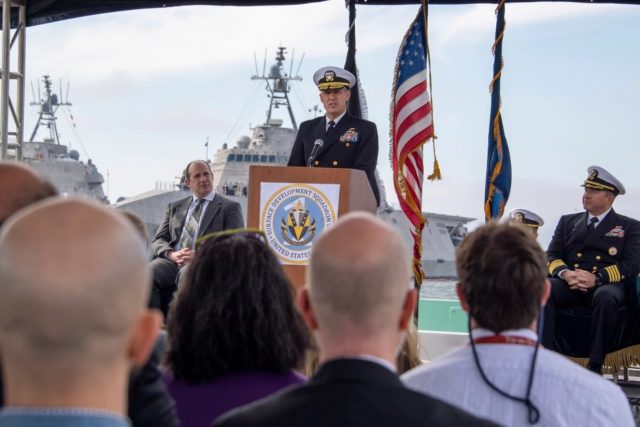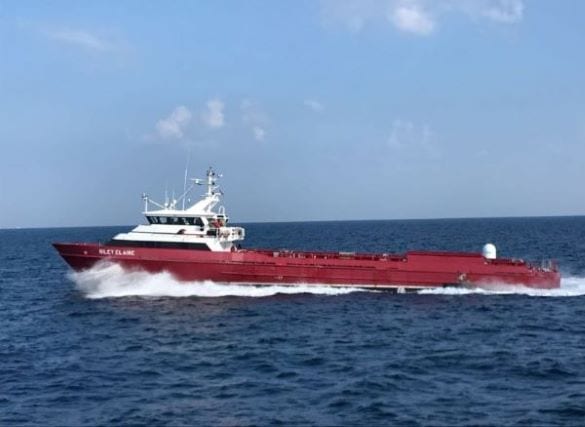
The US Defense Department’s Strategic Capabilities Office (SCO) officially transitioned the Ghost Fleet Overlord Program to the Navy Program Executive Office, Unmanned and Small Combatants (PEO USC), marking the transfer of the two unmanned surface ships built for the program to the navy.
The hand-over took place in a ceremony at Naval Base San Diego (NBSD) on March 3.
“The future of our fleet is a formidable manned and unmanned team,” said Navy Vice Adm. Stephen T. Koehler, Commander, US 3rd Fleet. “Where unmanned systems work in concert with, and enable enhanced capability of manned platforms; driving to an even more distributed and more lethal force.”
SCO initiated the Ghost Fleet Overlord Program in 2018 to accelerate the navy’s adoption of unmanned and autonomous systems.

The goal of the Overlord program was to convert large, commercially available vessels to autonomous operation. Designers installed perception and autonomy systems, automated and improved ship system reliability for extended missions and developed the command control and communications architecture.
The ships were even outfitted with modular launchers capable of launching SM-6 missiles, as shown in a demonstration last year.
“The Strategic Capabilities Office partnered with the Navy, Unmanned Maritime Systems (PMS 406) specifically, from the beginning of the Ghost Fleet Overlord Program,” said Jay Dryer, Director, Strategic Capabilities Office. “At transition, this enables PMS 406 and the larger team of operators, warfare centers and industry to not miss a beat, continue advancing this technology, and provide a real capability sooner. This is what SCO does best: integrate mature technologies to accelerate service priorities and create new capabilities for the warfighter.”
The program’s objective was achieved through long endurance transits and participation in fleet exercises. The fleet exercises demonstrated the feasibility of unmanned surface vessels (USV). Specifically, the ability to host and employ modular payloads through a realistic set of concepts of operations (CONOPS).
SCO was well positioned to mature unmanned systems using Other Transaction Authority (OTA) agreements with industry-led development teams given the increasing commercial use of autonomous technology.
SCO developed two prototype surface vessels to serve as test beds for the navy’s medium and large unmanned surface vessel programs of record.
During the program, Overlord USV Prototypes 1 (NOMAD) and 2 (RANGER) took part in multiple fleet level exercises and demonstrations, traveled 28,982 nautical miles in autonomous mode, and tested numerous payloads.
The advances achieved in autonomy, communications and payload integration by NOMAD and RANGER are a catalyst for developing the navy’s future USV programs of record, and in the acquisition of two additional Overlord USV prototypes for continued navy experimentation and development.
The SCO-led phase of this development culminates with the transfer of NOMAD and RANGER to the navy for follow-on development and fleet experimentation. The next phase will inform the navy’s unmanned concept development and directly support the department’s autonomy modernization priorities and unmanned campaign framework.


























